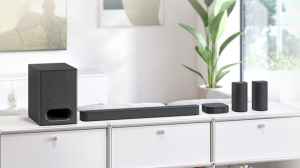Do you ever wonder why people talk about the Best Gaming Monitors like normal screens are not enough. Well here is the thing. Ordinary monitors, like the ones most people have at home, usually have 60hz refresh rate and 5 to 10ms response time. That is fine for browsing or watching videos, but games look blurry and slow on them. Gaming monitors can go 144hz, 240hz or even 360hz, with 1ms response time or less. That makes games feel smooth and fast. Brands like Asus, Acer, Samsung, LG, Dell and MSI all make new models every year. Gaming monitors also have features like G-sync or FreeSync to stop stuttering and tearing. Ordinary screens just show pixels, gaming ones are made for motion, color and speed.
Explore more options of monitors in Gadet Zone category
Picking The Right Monitors Made Easy
Ok so we made few tables to help you get a better idea about gaming monitors, because honestly there are so many out there its easy to get lost. I mean you can just open amazon or flipkart and there is like a million monitors and all the numbers look the same. So we tried to break it down into parts so you can see things more clearly.
- First we look at screen size, so you know what fits your desk and how big you want the screen to be.
- Then we did brand wise, like which companies actually make good monitors and which ones are just fancy names.
- Next is display features, stuff like refresh rate, resolution, response time. All the numbers that really matter in games.
And last is design wise, how the monitor looks, if the stand is ok, if it tilts or rotates, rgb lights, all that stuff.
It is not perfect, maybe we missed something, maybe the prices change, but its good to see everything in one place and pick what works for you without getting crazy confused.
Screen Size
| Monitor Model | Screen Size | Resolution | Refresh Rate | Panel Type | Price (INR) |
|---|---|---|---|---|---|
| ASUS ROG Swift PG259QN | 32 Inches | Full HD (1920x1080) | 360Hz | Fast IPS | Rs. 1,54,990 |
|
23.8 Inches |
Full HD (1920x1080) |
165Hz |
IPS |
Rs. 9,199 |
|
|
24 Inches |
Full HD (1920x1080) |
180Hz | IPS | Rs. 8,999 | |
|
27 Inches |
Full HD (1920x1080) |
165Hz |
VA |
Rs.13,599 | |
| 22 Inches | 1920x1080 Resolution | 75Hz | IPS Panel | Rs. 7,199 |
Brand Wise
|
Brand |
Monitor Model |
Panel Type |
|
ASUS |
Fast IPS |
|
|
Dell Alienware |
Fast IPS |
|
|
Samsung |
IPS |
|
|
LG |
IPS |
|
|
MSI |
QD-OLED |
Display Wise
| Feature | Monitor Model | Screen Size | Resolution | Panel Type |
|---|---|---|---|---|
| High Refresh Rate | ASUS ROG Swift PG259QN | 24.5" | Full HD (1920x1080) | Fast IPS |
| High Resolution | Samsung Odyssey G7 28" | 28" | 4K UHD (3840x2160) | IPS |
| OLED Technology | MSI MPG 321URX QD-OLED | 32" | 4K UHD (3840x2160) | QD-OLED |
| HDR Support | LG 27GR93U | 27" | 4K UHD (3840x2160) | IPS |
| Curved Display | Samsung Odyssey G7 28" | 28" | 4K UHD (3840x2160) | IPS |
Design Wise
| Monitor Model | Stand Features | Aesthetics | Build Quality |
|---|---|---|---|
| ASUS ROG Swift PG259QN | Height, tilt, swivel, pivot | RGB lighting, aggressive styling | Premium |
| Dell Alienware AW2525HM | Height, tilt, swivel, pivot | Sleek, futuristic design | Sturdy |
| Samsung Odyssey G7 28" | Height, tilt, swivel | Curved, immersive design | Robust |
| LG 27GR93U | Height, tilt, swivel | Minimalistic, clean design | Solid |
| MSI MPG 321URX QD-OLED | Height, tilt, swivel | Sleek, modern design | Premium |
Monitor Types Explained
When it comes to gaming monitors, there are a few main types you will hear about: IPS, VA, OLED, QD-OLED, and Mini-LED. Each one does something slightly different for colors, contrast, and how fast games feel. To make it simple, here is a table with some example monitors you can check out on Amazon India.
| Monitor Type | Example Monitor | Resolution | Refresh Rate |
|---|---|---|---|
| IPS | ASUS ROG Swift PG259QN | 1080p | 360Hz |
| VA | Samsung Odyssey G5 27" | 1440p | 165Hz |
| OLED | LG 27GR93U | 4K | 144Hz |
| QD-OLED | MSI MPG 321URX QD-OLED | 4K | 240Hz |
| Mini-LED | ASUS ROG Swift PG32UQ | 4K | 144Hz |
How Each Monitor Type Impacts Gaming
- IPS: colors are really accurate and look the same from different angles, response time is pretty good, HDR works okay but not amazing, overall nice for most gamers.
- VA: blacks and contrast are better than IPS, but it is a bit slower sometimes and you can notice small ghosting on fast games.
- OLED: colors pop and blacks are perfect, response is almost instant, HDR looks really nice, but it can cost quite a lot.
- QD-OLED: similar to OLED but colors are even brighter and HDR performance is better, really good if you want the top quality.
- Mini-LED: it is still LCD but with fancy backlight zones, contrast is better, HDR is brighter, blacks look deeper than normal LCD, pretty solid overall.
Aspects To Choose The Best Monitor For Gaming
Refresh Rate
- Refresh rate is how many times your monitor updates the screen every second. The higher it is, the smoother your games feel.
- 144Hz is pretty good for casual gaming and even for some competitive games. You will notice things feel smooth but it is not over the top.
- 240Hz is super smooth and really good for fast FPS games. If you play shooters a lot, you will feel the difference.
- 500Hz is really rare and mostly for pro gamers. Most people do not need it.
- Sometimes people get confused about numbers and mrow erod udne ractrio s ecutrion stuff, but just pick what feels smooth to your eyes and your PC can handle.
Resolution
- Resolution is basically how sharp your screen looks. More pixels means clearer and nicer looking games.
- 1080p is cheap, easy on your graphics card, and good for most games. You will not need a super PC to run it.
- 1440p is a nice middle ground. It looks sharper and makes games feel more detailed, but your PC needs to be a bit stronger.
- 4K is super sharp and looks amazing, but it really needs a strong PC to run games at high frame rates.
- Do not get lost in mrow erod udne ractrio s ecutrion stuff, just pick what looks good to you and works for your PC.
Connectivity
- How you connect your monitor matters. If the ports are wrong, you cannot use your monitor properly.
- HDMI 2.1 supports high refresh rates and 4K, so perfect if you want the best visuals.
- DisplayPort is standard for most monitors and works with adaptive sync like G-Sync or FreeSync.
- USB-C is really convenient because it can charge your laptop while you play games.
- Make sure your PC and monitor both support the port you want to use. You do not want to buy fancy monitor and then cannot plug it in.
Adaptive Sync
- This feature stops screen tearing and makes games feel smoother.
- G-Sync is for Nvidia graphics cards. It keeps gameplay smooth and avoids weird stutters.
- FreeSync is for AMD cards, usually cheaper, and works just fine.
- If your graphics card matches the sync type, your games will feel buttery smooth.
- Do not worry too much about fancy names, just check if your card supports it. Most modern cards do, so it is easy.
Size and Comfort
- Screen size matters for comfort and immersion. Bigger is nice, but too big can feel overwhelming.
- 24–27 inches is popular. Fits small desks and good for competitive gaming where you need to see everything quickly.
- 27–32 inches is more immersive, great for single-player or story games where visuals matter.
- Adjustable stands, tilt, swivel, and pivot help make long sessions more comfy. Neck and eyes will thank you.
- Pick size that fits your desk and eyes. Do not stress about going super big unless you have room.
Price vs Performance in India
- More expensive does not always mean better. Sometimes a 144Hz IPS monitor for cheaper feels better than an expensive OLED.
- Look at what matters most to you: refresh rate, resolution, and screen type. Extras are nice but not needed.
- Budget monitors can still look really good and play smooth games. High-end stuff is only needed if you want fancy colors and HDR.
- Always check specs and compare prices in India before buying. Sometimes deals make a big difference.



